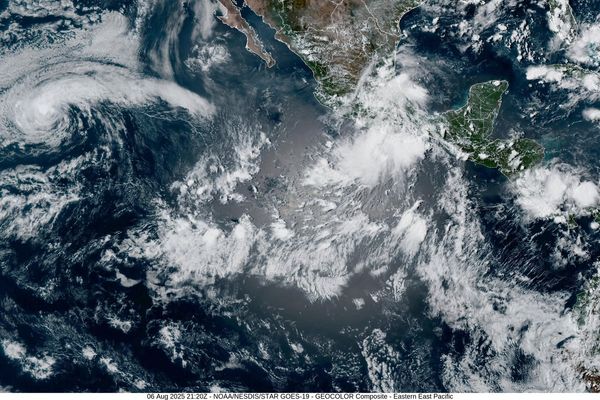
August just kicked off and volatility wasted no time crashing the party, as Wall Street's favorite fear gauge logged its biggest daily jump in months—and it might not be done yet.
- SPY ETF is rising fast. Check the chart here.
If you’ve been around markets long enough, you know summer doesn’t always mean calm.
In fact, August and September are statistically the two most volatile months of the year for U.S. stocks.
Over the past 30 years, the S&P 500, tracked by the Vanguard S&P 500 ETF (NYSE:VOO), has averaged losses of 0.56% in August and 0.65% in September.
When August begins, Wall Street desks thin out, liquidity dries up, and every new data release or geopolitical tweet seems to hit the tape harder. This year is already living up to that playbook.
Last Friday, the CBOE Volatility Index—better known as the VIX—jumped 22% in one day, its biggest move since April’s tariff-driven selloff.
That followed a softer-than-expected July jobs report and geopolitical noise after President Donald Trump tweeted about U.S. nuclear submarines near Russia, reacting to threats from former Russian President Dmitry Medvedev.
The S&P 500 and Nasdaq 100 both sank 2%, snapping a strong summer rally.
Read also: Trump Issues Nuclear Threat To Russia–And Wall Street’s Fear Gauge Goes Vertical
Is It Just A Blip? Or The Start Of A Volatility Cycle?
If history is any guide, this may just be the beginning.
According to Seasonax data, going long volatility—specifically buying the VIX—on Aug. 1 and holding through Sept. 30 has yielded positive returns in 65% of the past 35 years.
The average return is 10.8%, with a median of 3.3%, thanks to outsized spikes during major risk-off events.
For example, in 2015, it exploded 95% following China growth concerns. In 2008, the VIX surged 75% between August and September amid the Lehman Brothers collapse. Last but not least, in 2011, it spiked 82% during the U.S. debt ceiling standoff.
| Year | VIX Aug–Sept Performance |
|---|---|
| 2000 | +3.31% |
| 2001 | +57.20% |
| 2002 | +7.42% |
| 2003 | +9.49% |
| 2004 | -13.21% |
| 2005 | -1.32% |
| 2006 | -16.48% |
| 2007 | -24.63% |
| 2008 | +74.52% |
| 2009 | +0.20% |
| 2010 | +7.68% |
| 2011 | +81.57% |
| 2012 | -13.92% |
| 2013 | +28.28% |
| 2014 | -4.23% |
| 2015 | +95.06% |
| 2016 | +6.83% |
| 2017 | -6.34% |
| 2018 | -8.75% |
| 2019 | -9.12% |
| 2020 | +8.61% |
| 2021 | +18.91% |
| 2022 | +38.44% |
| 2023 | +26.42% |
| 2024 | -10.01% |
Buy the VIX Or Buy The Dip? Why Not Both?
Some investors see the VIX as more than just a hedge—it can also be a powerful contrarian signal to actually increase your stock exposure.
According to DataTrek Research, the weak jobs data and downward revisions to prior months suggest the U.S. economy may be closer to a recession than previously thought.
Their VIX Playbook recommends adding equity exposure when the index spikes into the 27 to 35 range.
Historically, three-month forward equity returns following such spikes average 5%-8%, with win rates ranging from 76% to 86%.
Bottom Line: Volatility Can Be Your Friend This Summer
August and September are notorious for shaking up complacent markets.
So what's the move here? Hedge part of your portfolio with volatility, for example by buying VIX call options or the ProShares Trust VIX Short-Term Futures ETF (NYSE:VIXY), and stay ready to scoop up stocks if panic creates opportunity.
While buying the VIX has historically offered protection and even solid returns, using volatility spikes as a trigger to buy quality equities has also worked well—if you’re willing to ride out the storm.
Read Next:
Image created using artificial intelligence via Midjourney.







